There is weeks of walking in the valleys of Cappadocia around Goreme. We did our best to cover them all! The walks are fantastic and there’s virtually no one else on the trails. There are hundreds of Byzantium churches cut into the soft volcanic tuff rock in the valleys. These date from the 4th century with decoration varying from austere to the most beautiful frescos illustrating stories from the Bible. Some remain in excellent condition but is a real shame that many of the frescoes have been deliberately damaged. A few dozen churches can be visited. We got sore necks from gawking in amazement.
Waymarking is a bit sporadic and good maps are non-existent. Nevertheless we were able to do all the walks without a guide. GPS certainly helps. There is a map here.
Pigeon Valley
Pigeon Valley takes its name from the large number of pigeon lofts in the valley. For centuries these have been used to collect pigeon poo to fertilise the grape vines and eggs for making mortar for frescos.

Rocky chimney with dove lofts at the start of the walk
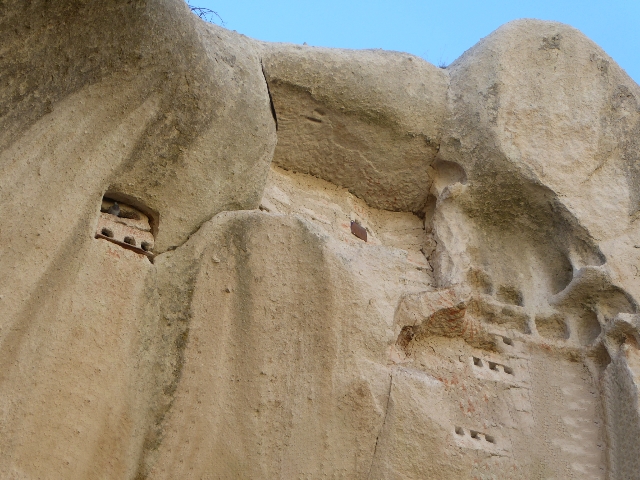
Haven’t figured out how the farmers got up there to harvest the pigeon poo but this pigeon loft …
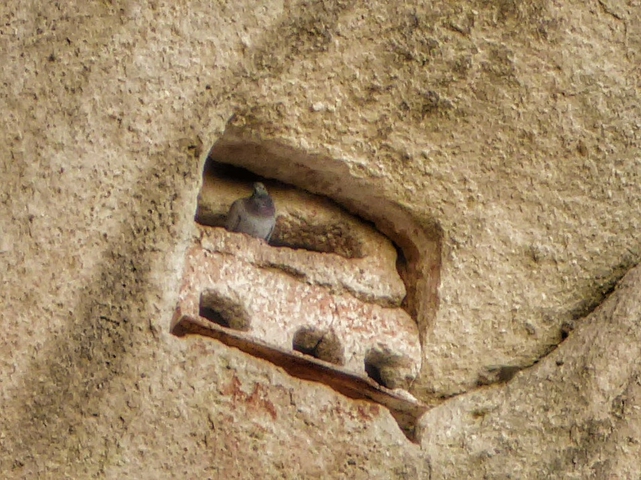
… has a pigeon
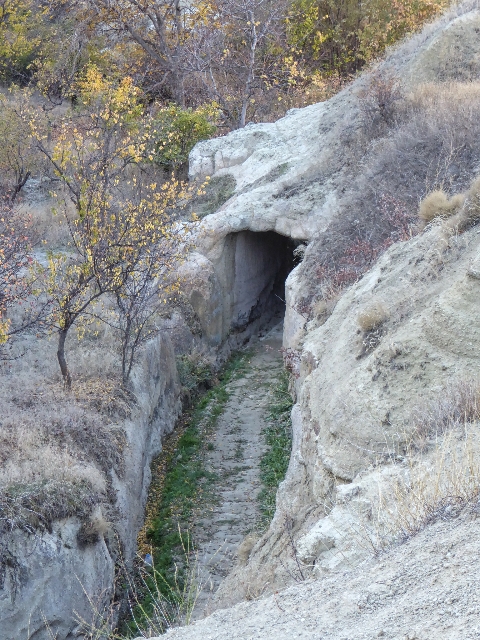
Pigeon Valley path takes a tunnel cut through the rock
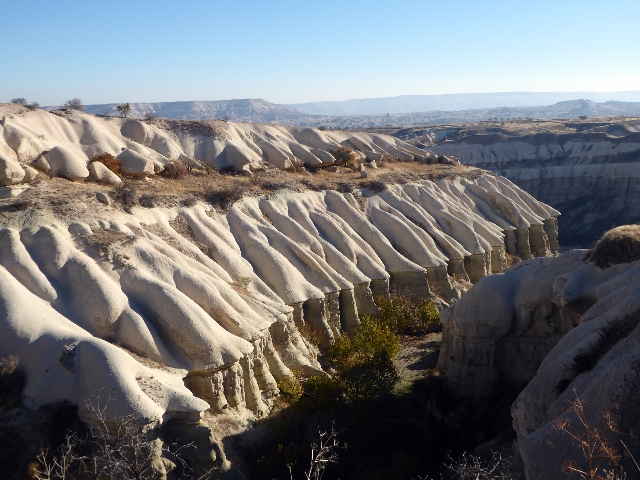
Looking back down at Pigeon Valley
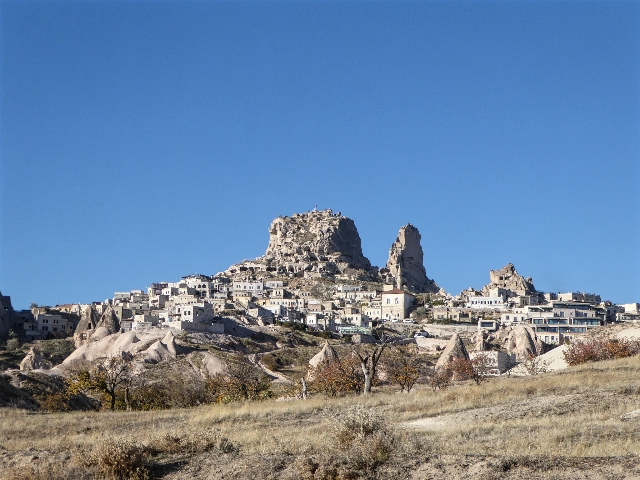
Uchisar Castle is at the end of Pigeon Valley, 300 meters above and 4 km from Goreme

An old, unrestored building in Uchisar
White Valley
White Valley starts near Uchisar and leads to Love Valley.

Descending into White Valley
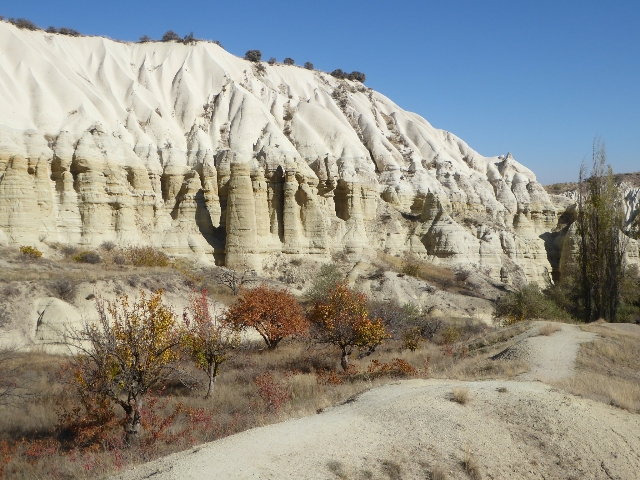
White Valley
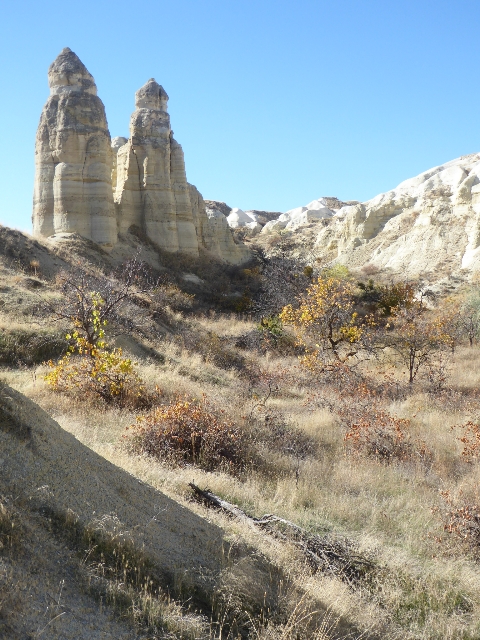
Chimneys in White Valley
Love Valley
Seems a bit childish this name, but it is what it is.
After an eruption millions of years ago, ash and lava formed soft rocks. Wind and water has eroded the softer rock, leaving the hard cap rock on top of pillars and forming the fairy chimneys.
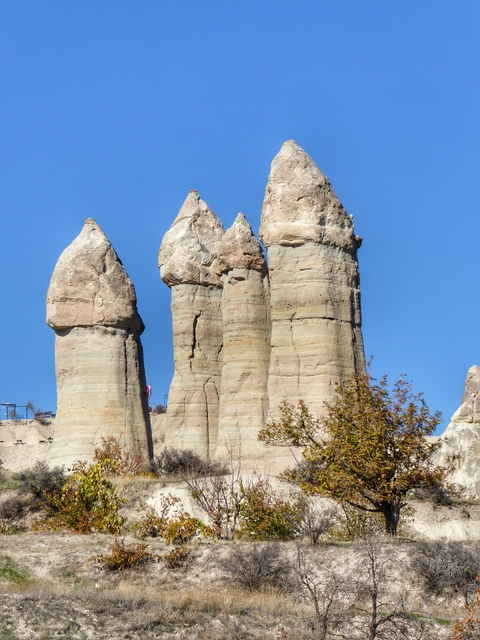
Love Valley formations
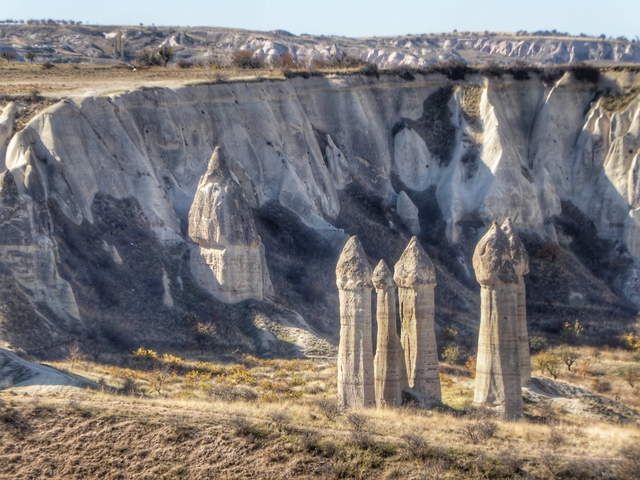
Love Valley from above
Swords Valley
Swords Valley runs from the Goreme Open Air Museum to the start of the Red Valley and is 2700 meters long. In places, it is very narrow.
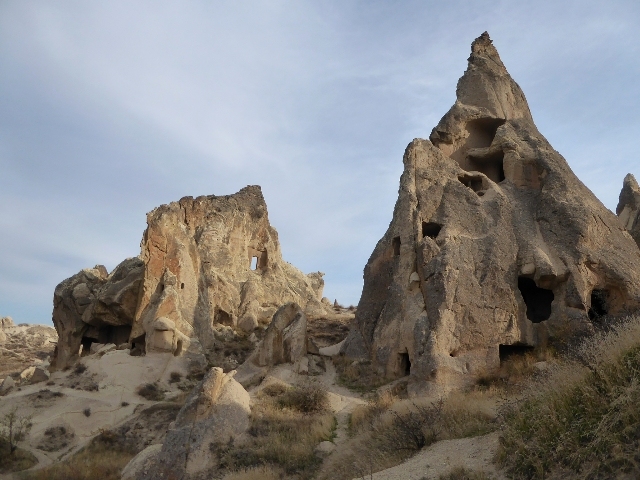
At the start of Swords Valley
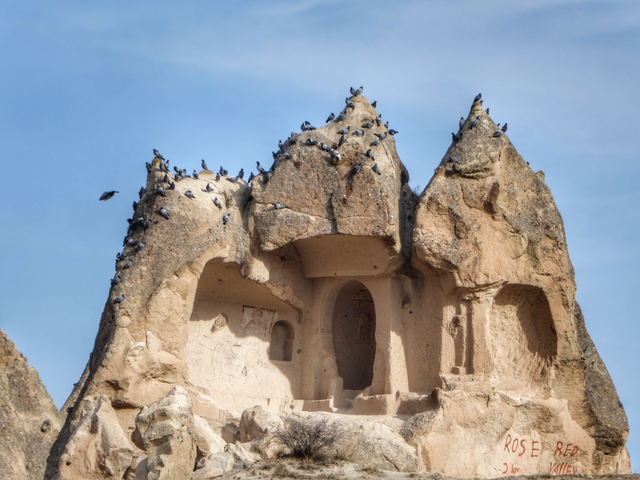
We saw more pigeons in Swords Valley than in Pigeon Valley!
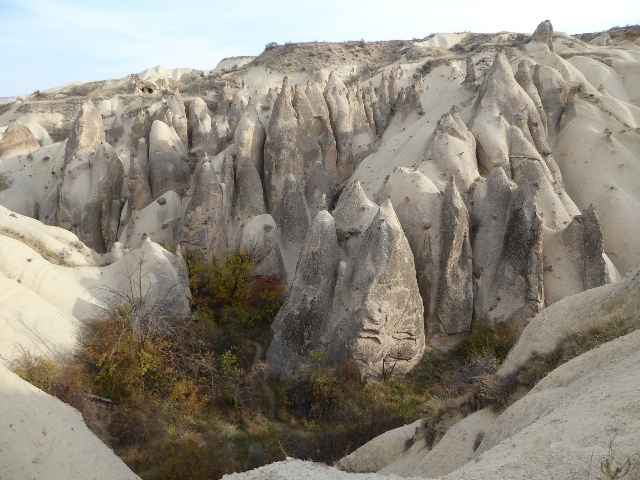
The path through Swords Valley …
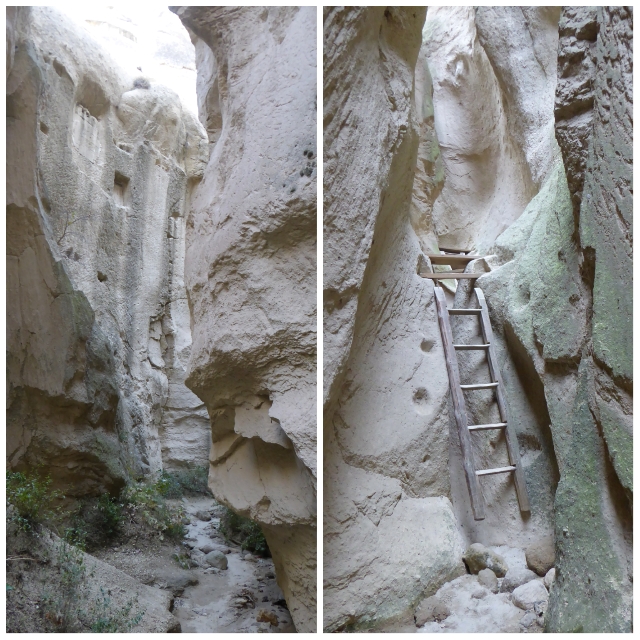
… gets narrow and climbs via a ladder
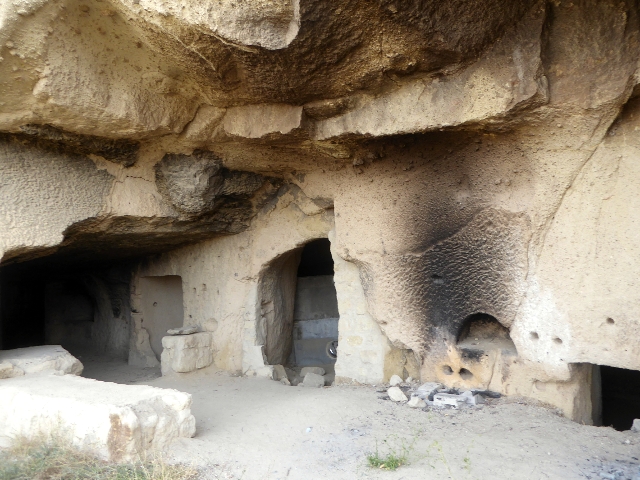
This cave has been used for centuries
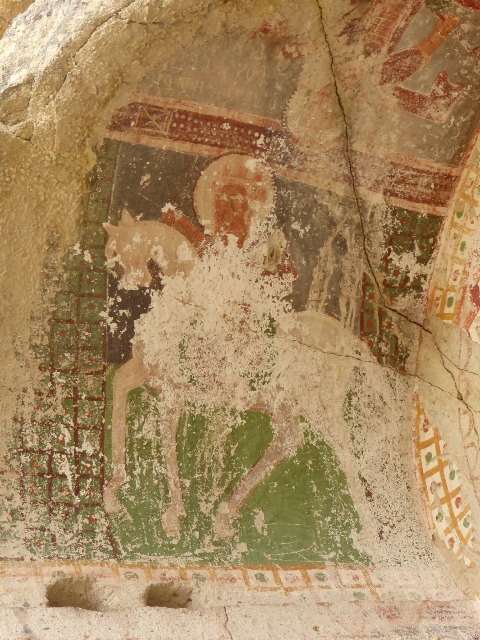
Unfortunately this church was locked so we could not get in
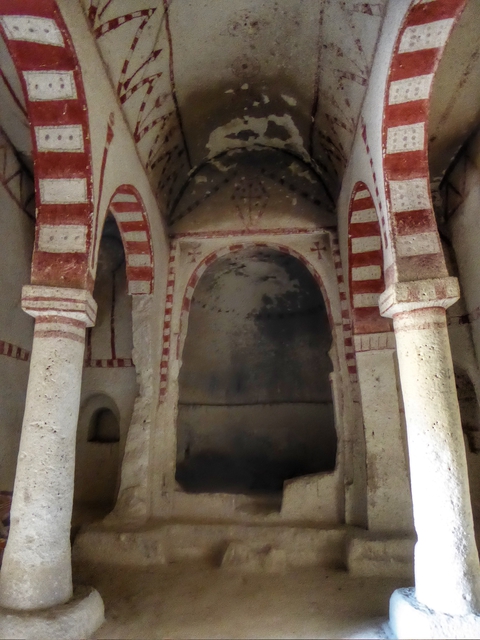
We made a detour to see the Aynalı Church, carved in the 11th century
Red Valley
Red Valley is named for the rose-coloured rock that varies in colour and intensity depending on the light.

Grape vines and fruit trees growing in the Red Valley
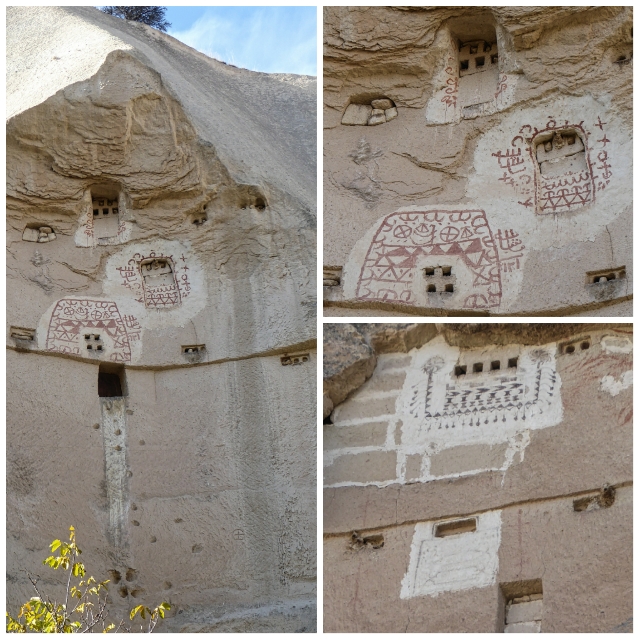
Painted pigeon lofts in the Red Valley
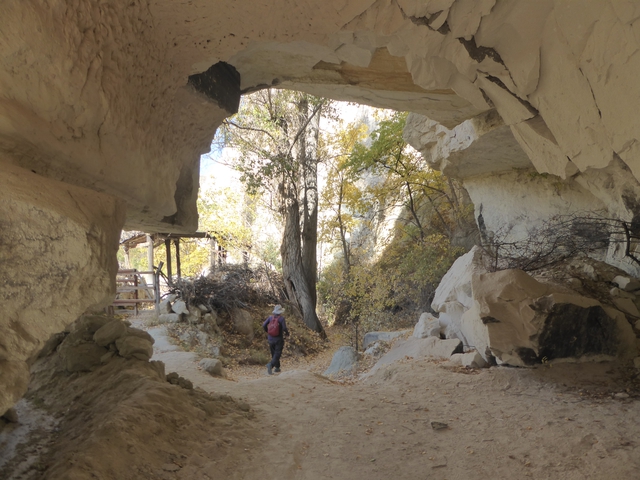
Red Valley trail goes through a cavern …
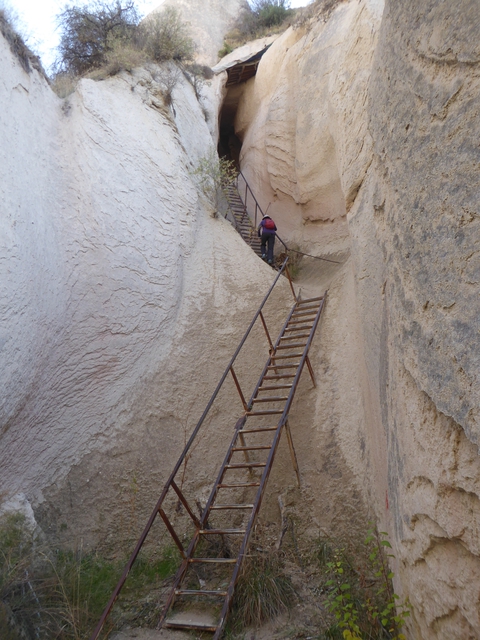
… and climbs steeply
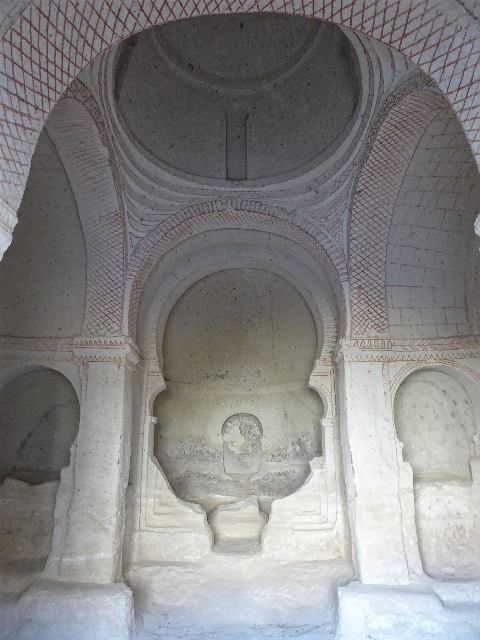
Meskendir Cave Church painted red ochre to resemble brick
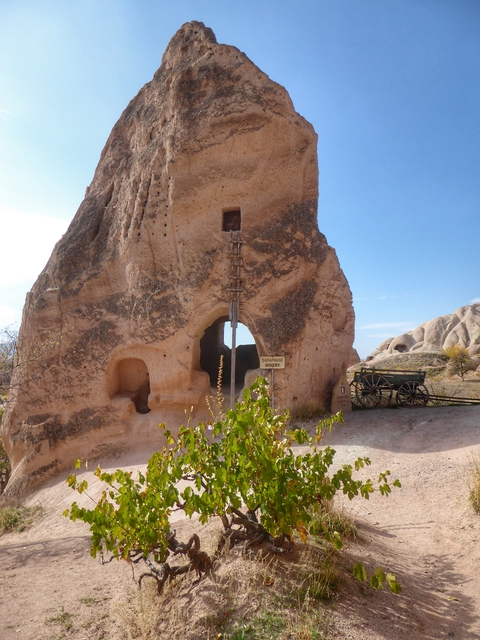
Old Bee House Winery – in front is an indigenous Emir grape vine
Emir grows nowhere else and produces a crisp dry white wine
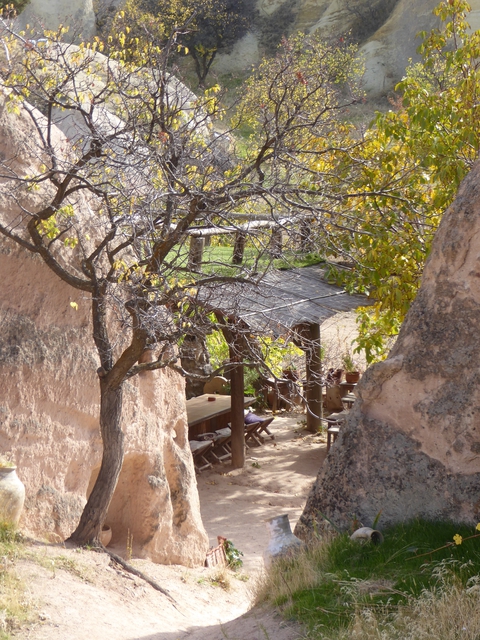
Red Valley tea house
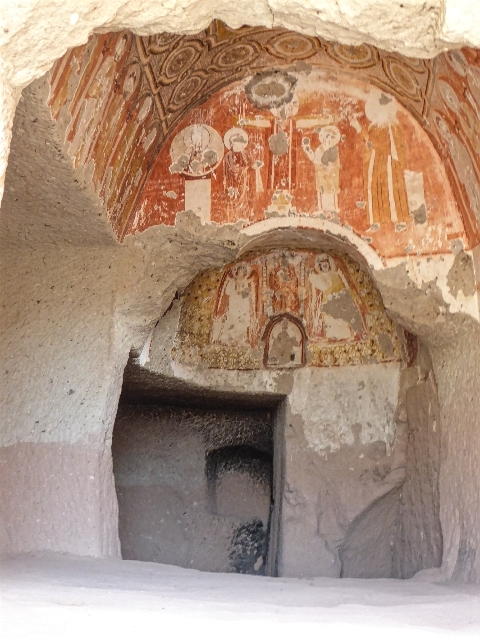
Inside the 7th century Uzumlu Church in a fairy chimney
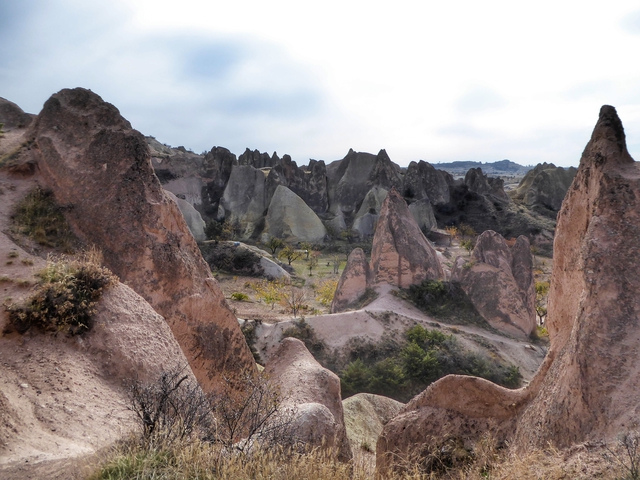
More of the Red Valley
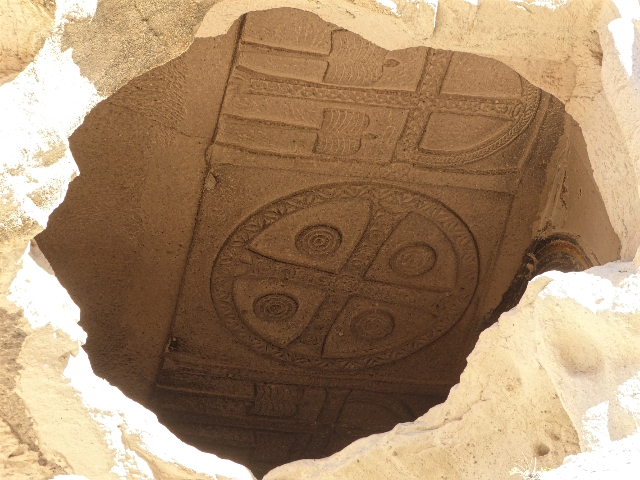
We could not find the name of this broken church
There are crosses and palm trees engraved in the ceiling
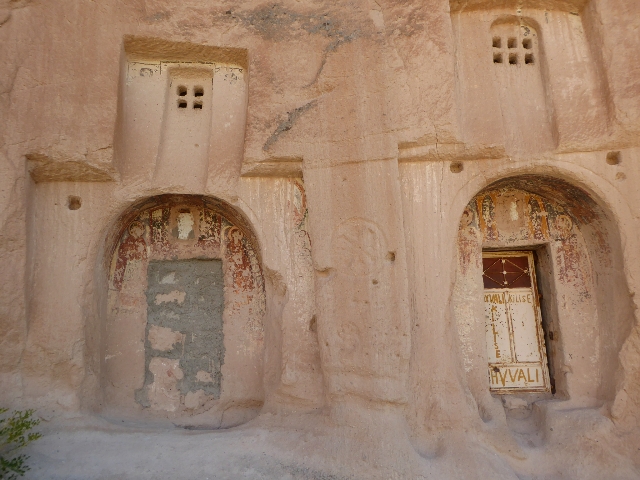
The Ayvali Church was locked so we couldn’t get inside
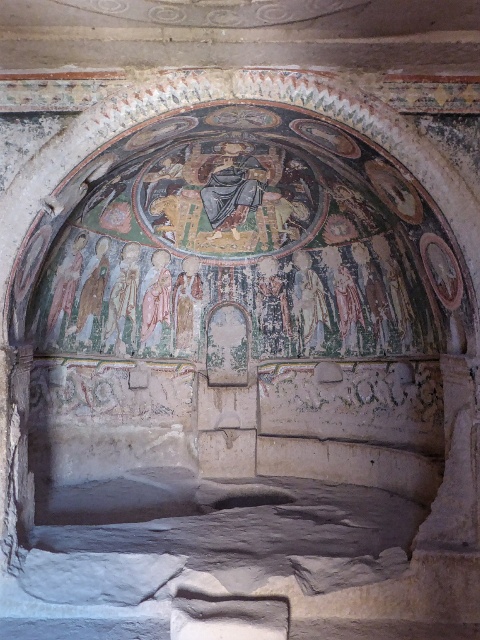
Inside World Heritage Hacli church …
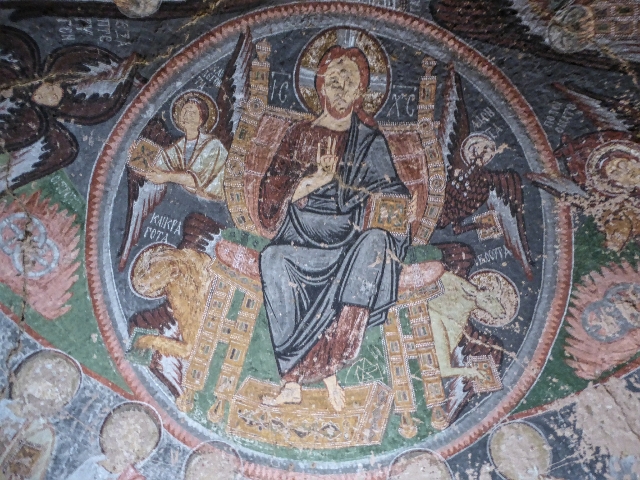
… there ia a fabulous fresco showing the incarnation of God
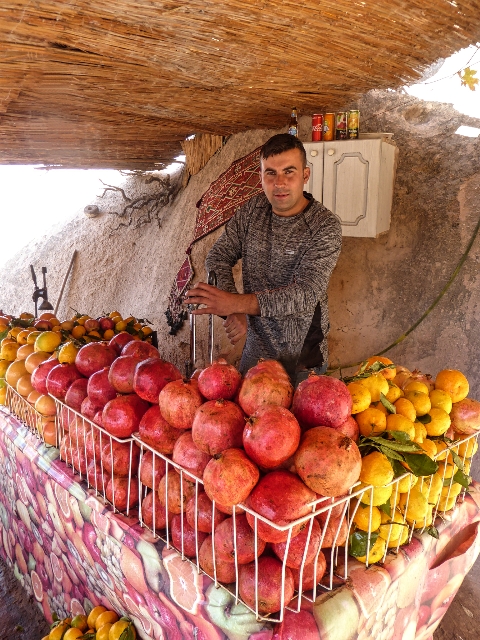
There’s a man selling delicious fresh orange and pomegranate juice in the valley
Rose Valley
Like Red Valley, Rose Valley changes colour during the day.
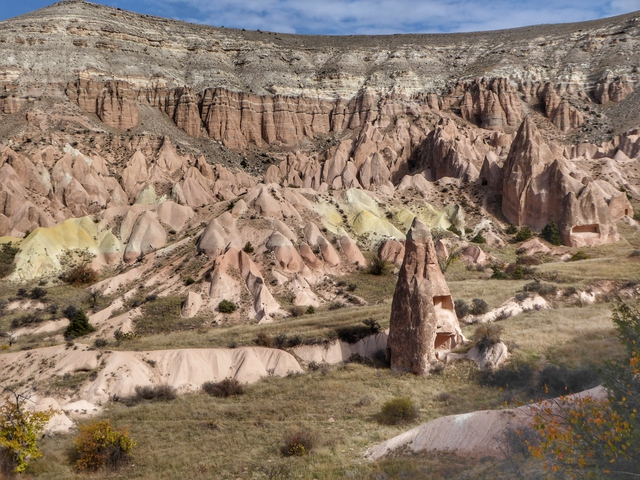
Rose Valley colours depend on the light

The trail through Rose Valley
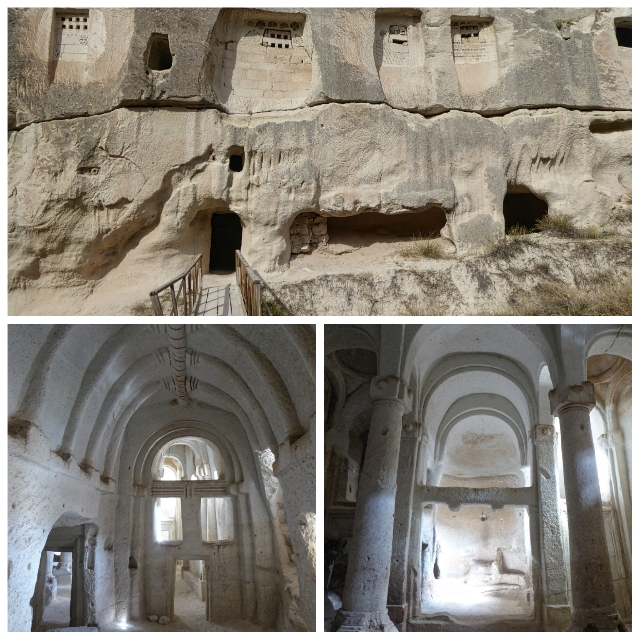
From the outside there is no indication of what lies within
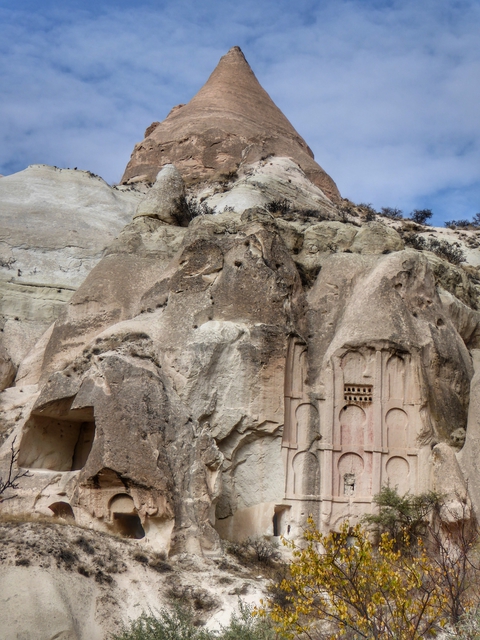
Facade of another Rose Valley church
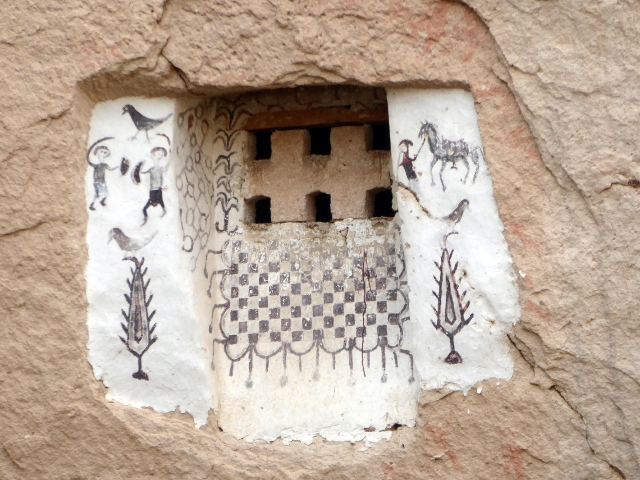
A pigeon loft in Rose Valley
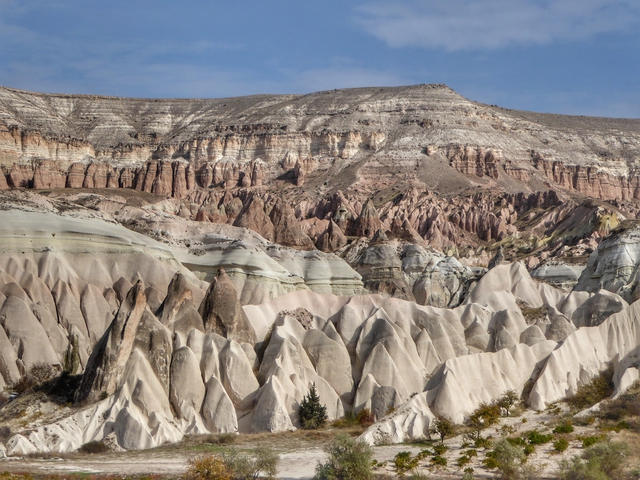
Another view of Rose Valley
Zemi Valley
Zemi Valley is about 6 km long and 300 meters uphill so a 12 km walk today.
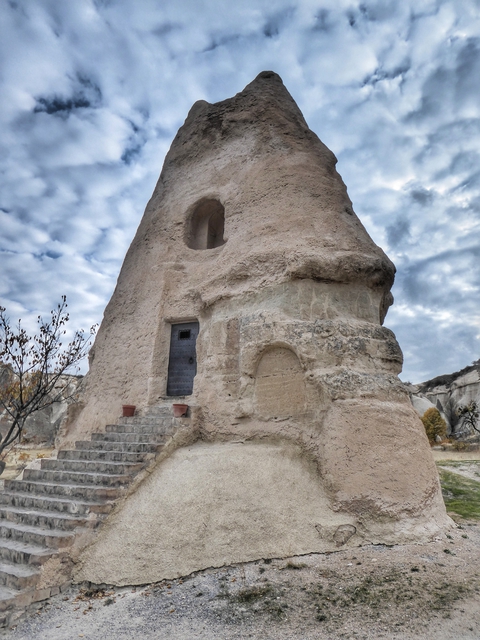
First stop – World Heritage El Nazar Church carved out of a single rock
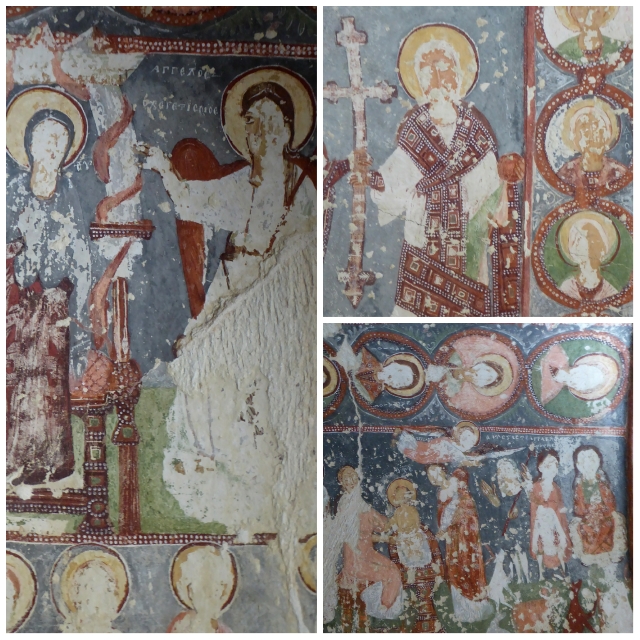
Some of the 10th century frescoes in El Nazar Church
Top right – Constantine, the first Roman emperor to convert to Christianity
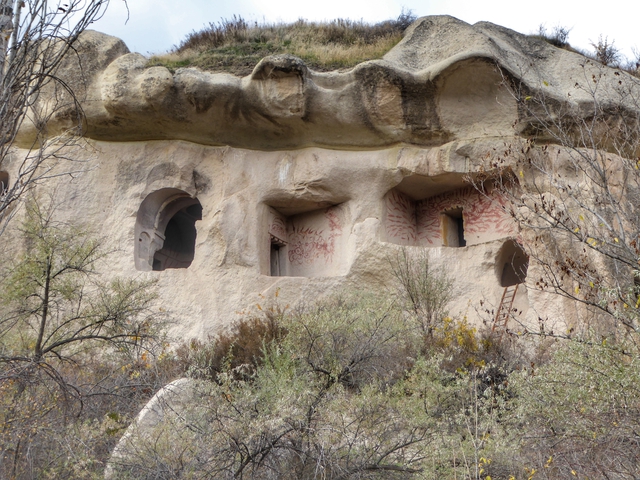
Shown on my map as “ruins”, perhaps the remains of an underground village …
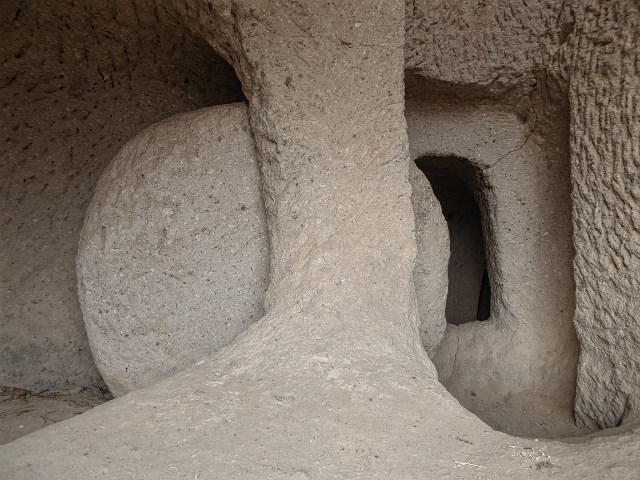
… has a round rock door that can only be opened from this side
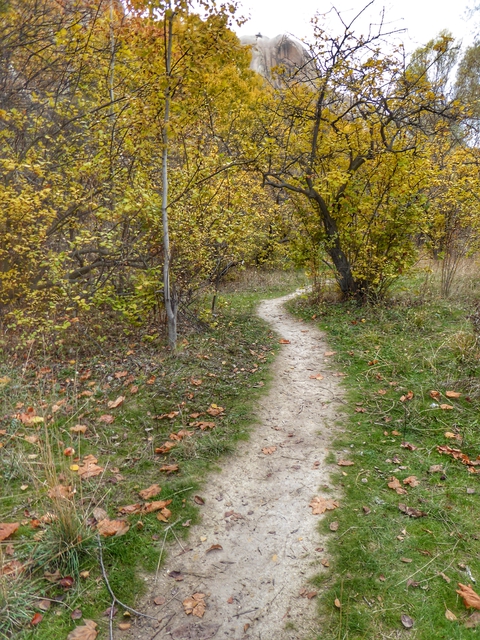
Autumn in Zemi Valley
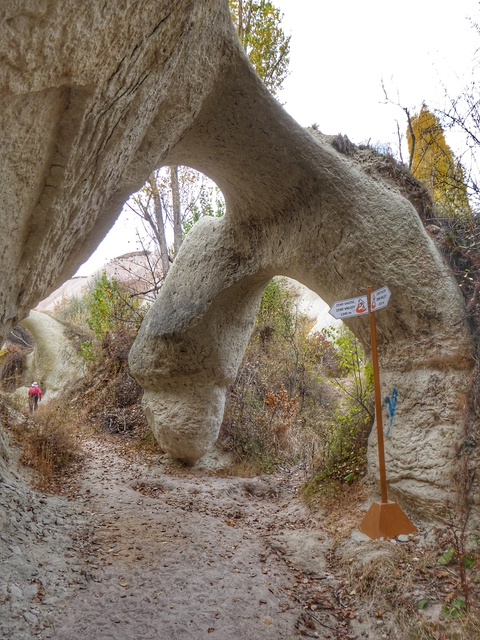
Zemi Valley is one of our favorites
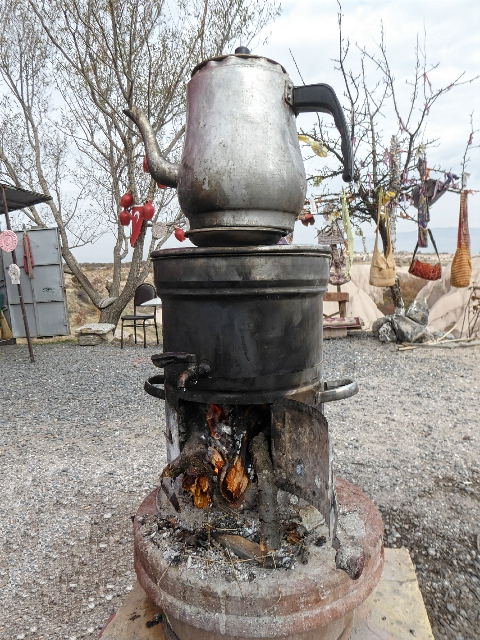
Stopped for a tea at the end of the Zemi Valley
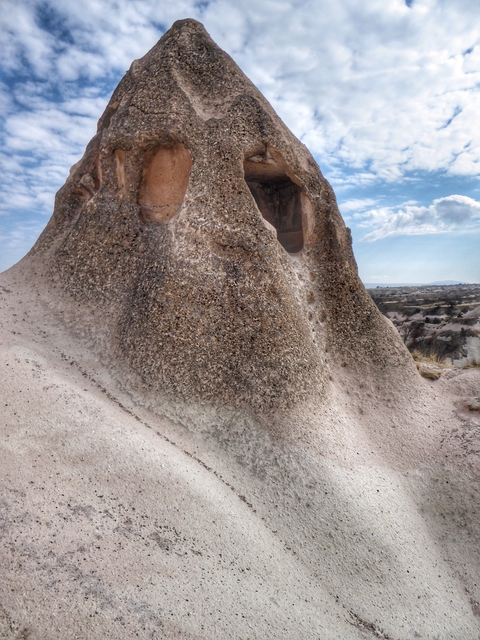
To get into the Karabulut Church you would have to climb up the rock so …

… I took this picture from below
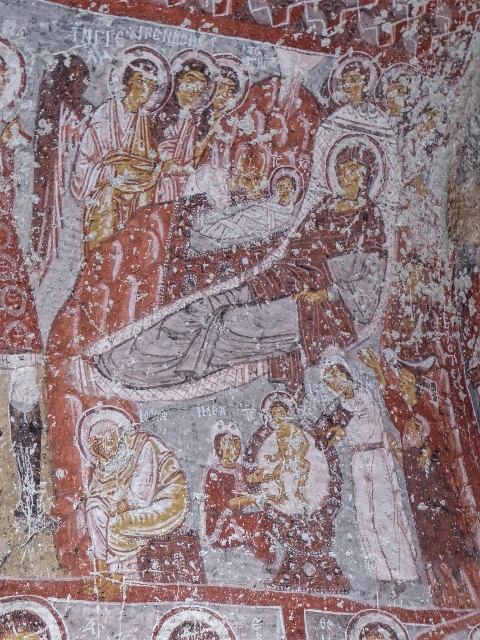
Sarnic Church – Mary, Jesus and the Three Wise Men
The 11th century Sarnic Church was used as a water cistern for a period
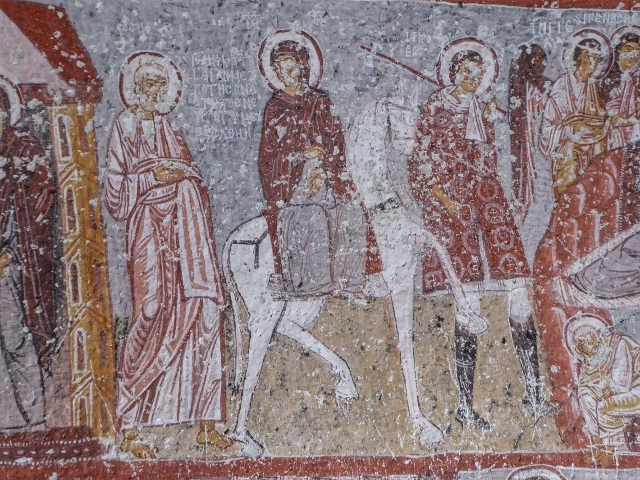
Another fresco in the Sarnic Church
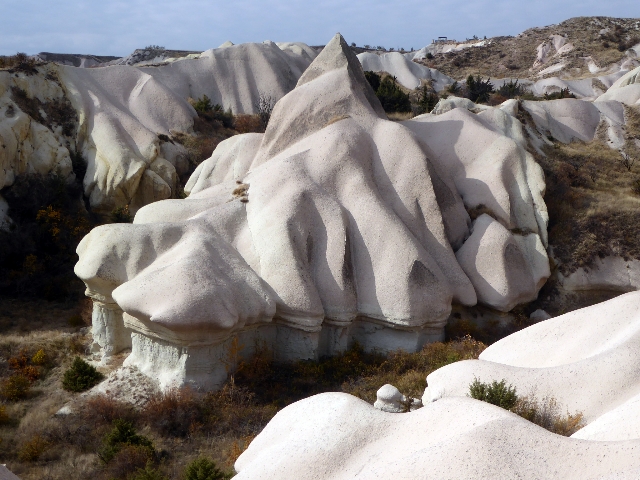
Looks like a giant Turkish ice cream
Ihlara Valley
Ihlara Valley is about 1½ hours by car each way from Goreme. The trail from Ihlara to Semile along the 120 meter deep valley floor is 14 km long. It is a fabulous walk along a gorgeous river. The valley, containing 105 churches (8 Byzantium churches and a Cathedral can be visited) and 10,000 rock caverns was an important monastic center and hermitage from the 4th century. There some beautiful, vibrant frescoes but unfortunately many have been damaged. None of the churches are at the bottom so a climb halfway up the valley wall is needed to see them, limiting visitors.
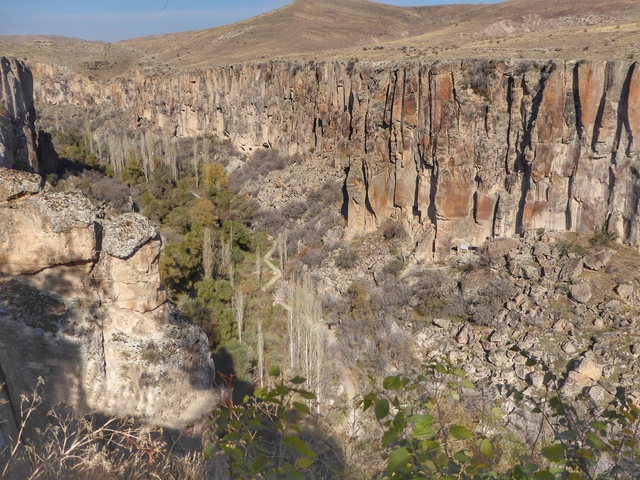
Looking down into the Ihlara Valley – there’s 360 steps to descend to the valley floor
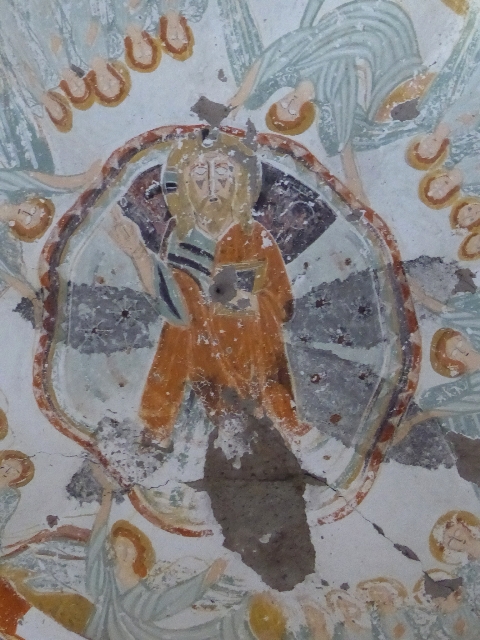
Ascension of Jesus on the dome of Daniel Pantonassa Church
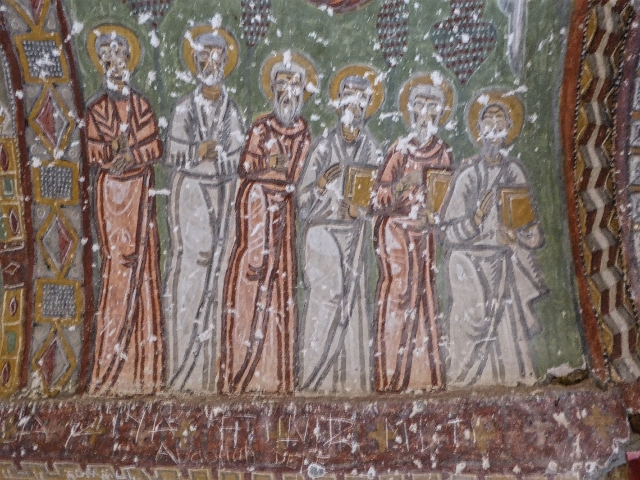
Disciples in Kokar Church

We used this bridge to cross the stream
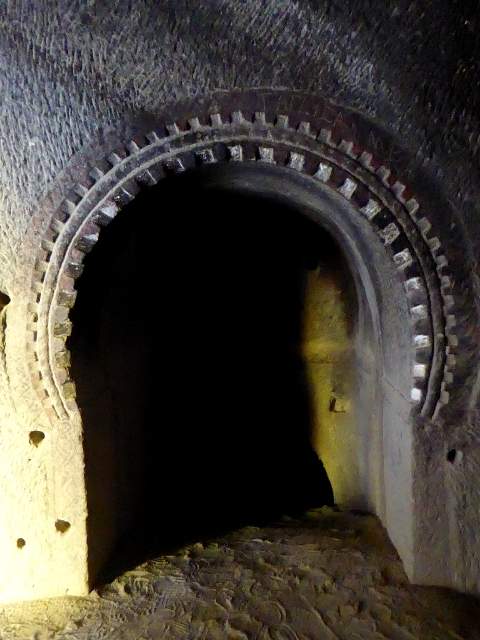
Carved door frame of 9th century Dark Castle Church
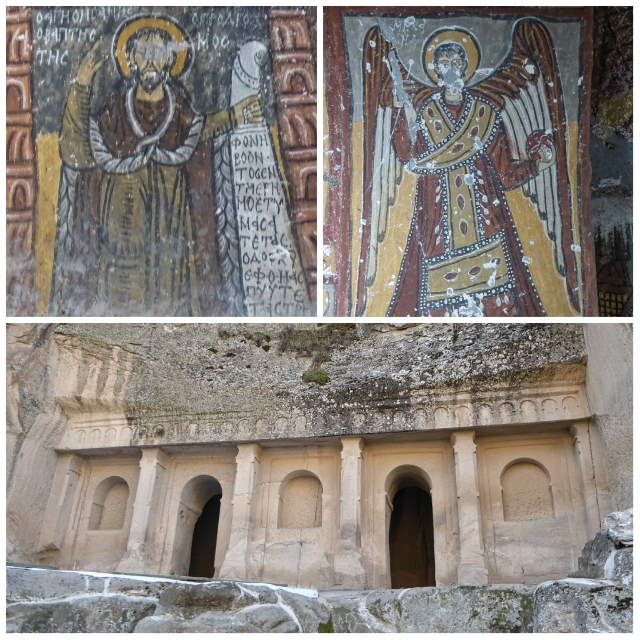
Serpent Church inside and out
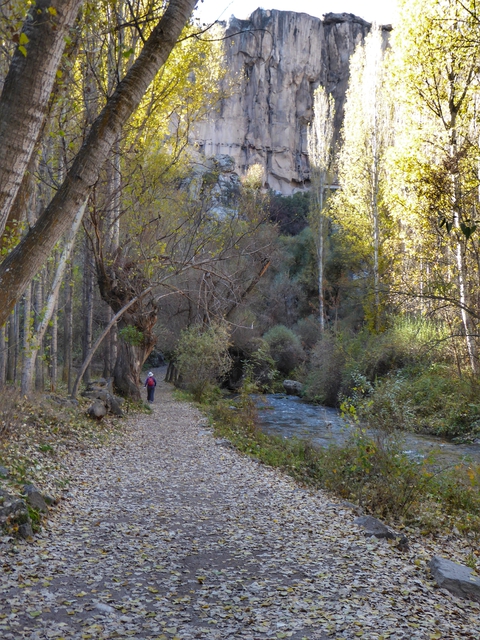
It’s a lovely walk beside the river
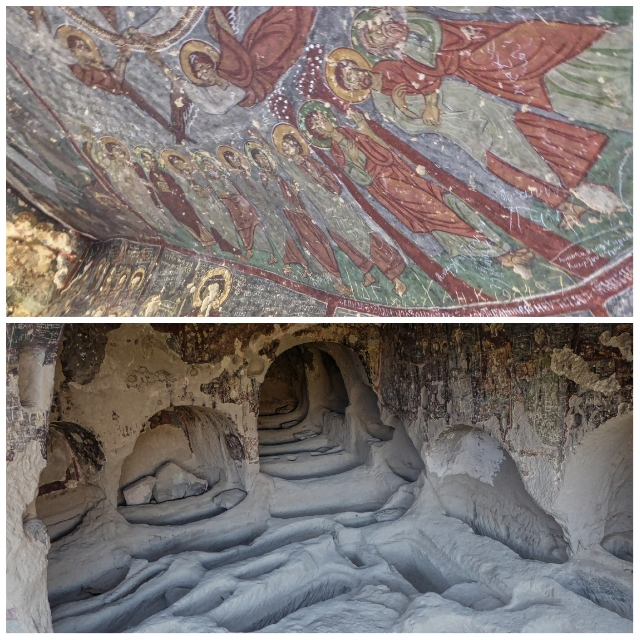
Saint George Necropolis, graves in the floor and angels on the ceiling
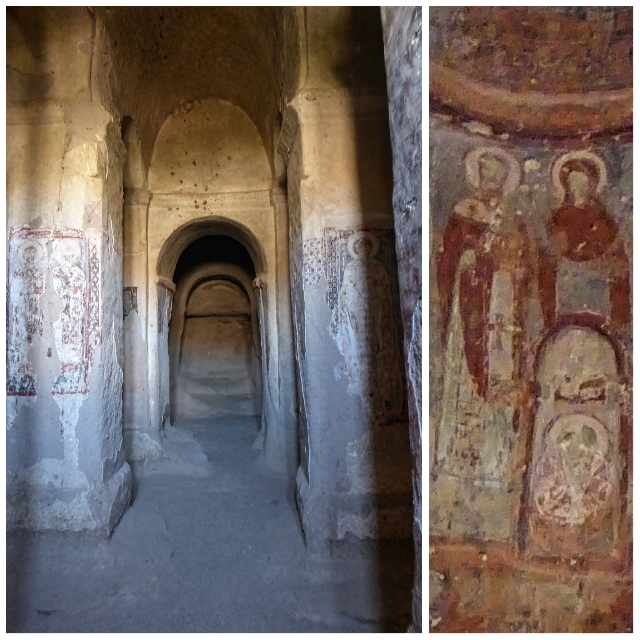
Pillars supporting Direkli Church and 10th century frescoes

Bahattin Samanligi Church frescoes
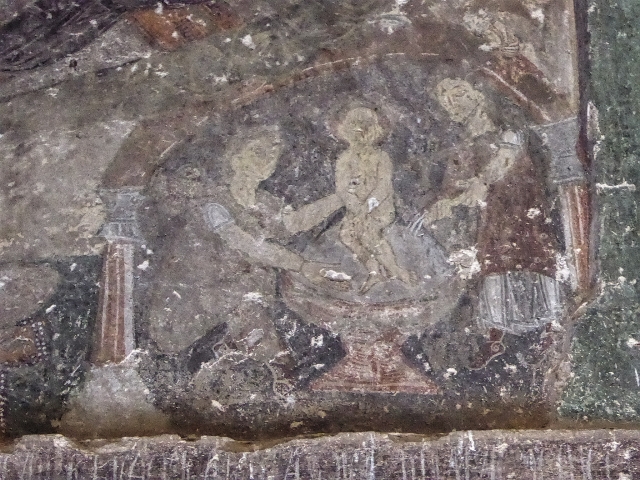
Mary, Joseph and Jesus in Bahattin Samanligi Church
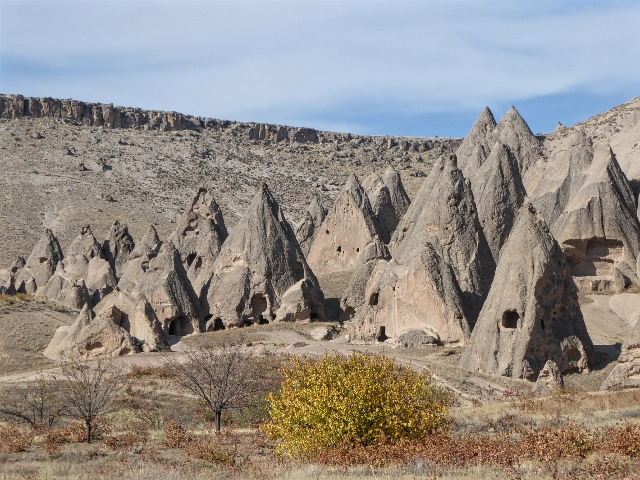
The end of the valley
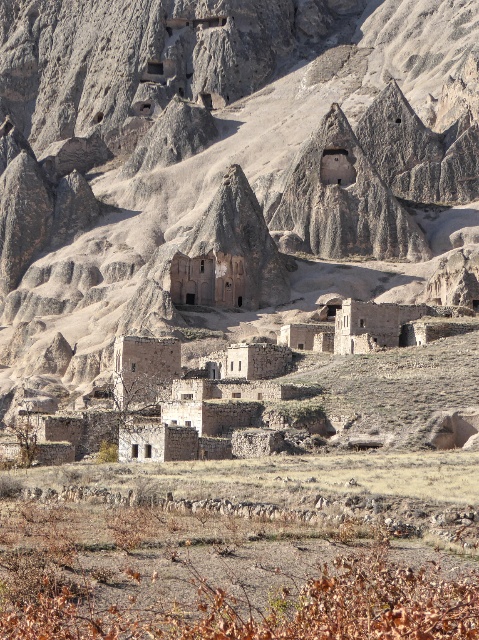
Old Selime village was abandoned about 30 years ago, relocated to a safer place
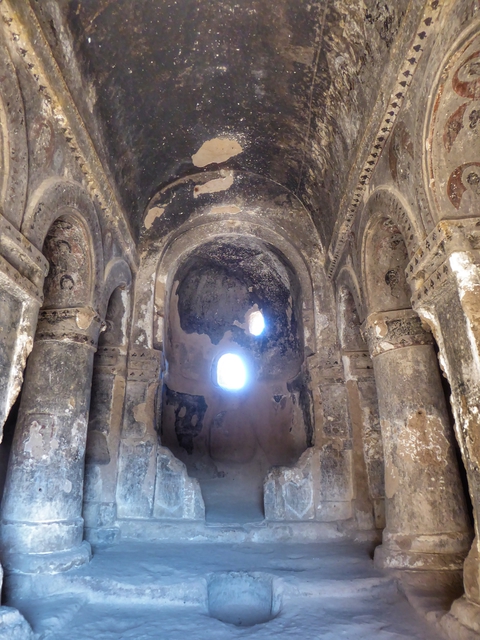
Byzantium Selime Cathedral (8th century) blackened by years of cooking fires
The first non-secret mass in Cappadocia took place here
